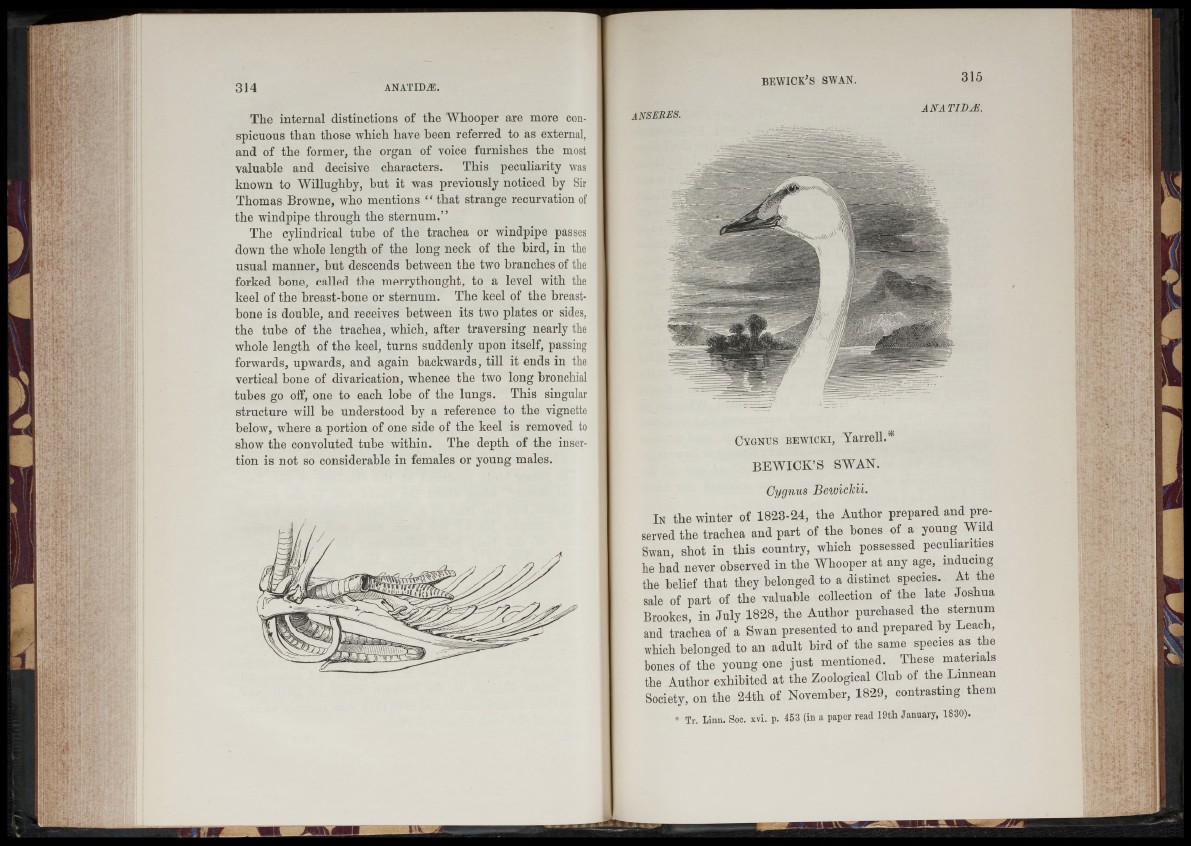
314 ANATIDiE.
"■> ■ : ■
I
! ^ f ::
I '
1 I , ■
I
The internal distinctions of the Whooper are more conspicuous
than those which have been referred to as external,
and of the former, the organ of voice furnishes the most
valuable and decisive characters. This peculiarity was
known to Willugliby, but it was previously noticed by Sir
Thomas Browne, who mentions “ that strange recurvation of
the windpipe through the sternum.”
The cylindrical tube of the trachea or windpipe passes
down the whole length of the long neck of the bird, in the
usual manner, but descends between the two branches of the
forked bone, called the merrythought, to a level with the
keel of the breast-bone or sternum. The keel of the breastbone
is double, and receives between its two plates or sides,
the tube of the trachea, which, after traversing nearly the
whole length of the keel, turns suddenly upon itself, passing
forwards, upwards, and again backwards, till it ends in the
vertical bone of divarication, whence the two long bronchial
tubes go off, one to each lobe of the lungs. This singular
structure will be understood by a reference to the vignette
below, where a portion of one side of the keel is removed to
show the convoluted tube within. The depth of the insertion
is not so considerable in females or young males.
b ew ic k ’ s sw a n 315
Cygnus bewicki, Yarrell.*
BEWICK’S SWAN.
Cygnus Bewickii.
In the winter of 1823-24, the Author prepared and preserved
the trachea and part of the bones of a young Wild
Swan, shot in this country, which possessed peculiarities
he had never observed in the Whooper at any age, inducing
the belief that they belonged to a distinct species. At t e
sale of part of the valuable collection of the late Joshua
Brookes, in July 1828, the Author purchased the sternum
and trachea of a Swan presented to and prepared by Leach,
which belonged to an adult bird of the same species as the
bones of the young one just mentioned. These materia s
the Author exhibited at the Zoological Club of the Linnean
Society, on the 24th of November, 1829, contrasting them
* Tr. Linn. Soc. xvi. p. 453 (in a paper read 19th January, 1830).